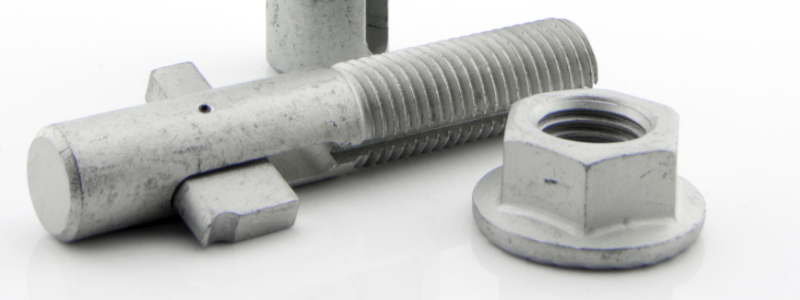Hollow Sections: Welded or Bolted Joints?
Blindbolt UK | 6th October 2021

Blind Bolts
The advantages of hollow sections are clear – lightweight, structurally efficient and ideal for exposed steelwork. The challenge comes when forming joints, particularly when connecting other members or fittings to hollow sections.
The common solution is to weld, which is fine when completed in the fabrication workshop but less appealing when completed on site. Site welding can be completed satisfactorily, but demands safe access, weather protection, subsequent inspection and making good of the surface protection. In many cases, temporary support is required before the welds are completed.
In contrast, “blind” fixings may be used to provide a capable, quick and safe solution allowing the project to proceed in a timely manner. Perhaps even more importantly, a bolted solution provides a joint which can be readily disassembled, facilitating the reuse of the steelwork – an important contribution to a truly circular economy.
Welding On Site
Site welding may not be common in the UK, or preferred, but may be considered when a compact joint is required – the weld can generally achieve the full strength of the member and properly executed can accentuate the clean lines of exposed steelwork.
The potential disadvantages of welding include the necessary safe access to each joint, the requirement to hold the elements to be welded in place and simply the time taken to complete all the necessary operations. Safe access, weather protection, inspection of the completed welds and making good the protection system all take time, before moving on to the next joint.
The Alternative to Welding – Blind Bolts for Hollow Sections
As the name suggests, blind bolts are fixings which may be installed and tightened from one side only. They are ideal for connections to hollow sections where access to the inside is not possible. Like other bolted solutions, the joint is completed quickly, without any special temporary works and does not require highly trained operatives. Some degree of tolerance is accommodated by the use of blind bolts in normal clearance holes, so elements of the joint can be brought together as the bolts are tightened without any additional measures. With the protection system completed offsite and undamaged by the bolting process, erection can proceed safely and efficiently.
Blind fixings such as blind bolts need not be limited to connections to hollow sections. blind bolts are ideal when access to the reverse side of a joint is inconvenient or difficult to provide safely, even for bolted connections.
Bolted connections using blind bolts have one key advantage over welded connections – the bolts may be removed and the joint disassembled. With increasing emphasis placed not on recycling of steelwork but reuse, the opportunity to readily decompose a bolted structure is a considerable advantage.
Connecting To Existing Steelwork
When the precise location, strength and chemical composition of existing steelwork is uncertain, which may make site welding problematic, blind bolt fixings offer a reliable simple solution only requiring site drilling. Packs may be introduced to accommodate tolerances and allowed for in the design of the bolted connection.
Ready to take the next step? Discover the value behind switching to our blind bolts by clicking here
The fact that blind bolts are used in such a wide range of different industries just shows how important they are for the future. At blind bolt, we are continuing to find new ways to improve our blind fixings as well as constantly discovering brand new avenues where our products can save you time and money while also increasing the range of blind bolt sizes, we offer in order to fit your requirements.
Have any questions? Get in touch and speak to a member of the blind bolt team today on +44 (01299) 272 955 or send us an email on enquiries@blindbolt.co.uk. We look forward to hearing from you.